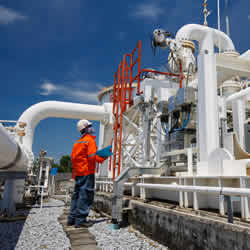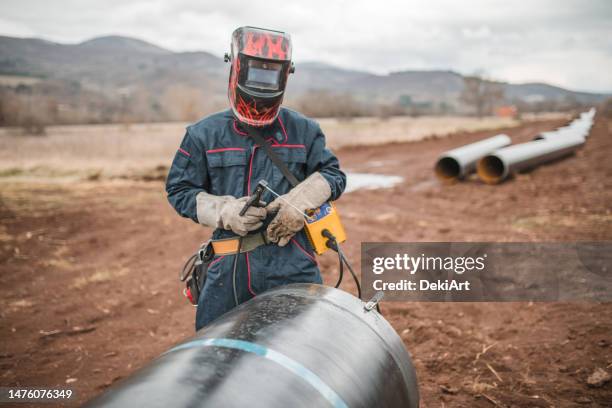Advanced Strategies in Pipe Welding Assessment: Technologies and Technologies for Enhanced Accuracy and Reliability in Weld Assessment
The landscape of pipe welding assessment is undertaking a considerable change, driven by sophisticated techniques that guarantee to improve both precision and dependability in weld analyses. Innovations such as automatic inspection systems and advanced imaging technologies are redefining conventional techniques, while non-destructive testing approaches make certain material integrity is kept.

Relevance of Weld Assessment
Making certain the stability of pipe welds is crucial to the total safety and integrity of industrial systems. Welds function as the architectural foundation of pipes, which transfer a range of fluids under differing stress. Issues in welding can result in catastrophic failings, leading to not only significant financial losses yet also potential ecological calamities and hazards to public safety and security. For that reason, strenuous assessment of welds is indispensable to the lifecycle of pipe framework.
The value of weld evaluation expands beyond simple compliance with governing requirements. It acts as a proactive action to identify and remedy imperfections, such as incomplete fusion, porosity, or cracks, before they intensify right into significant concerns. Reliable inspection strategies additionally contribute to the longevity of pipelines, minimizing maintenance expenses and enhancing operational efficiency.
Additionally, extensive weld evaluations foster trust amongst stakeholders, consisting of governing bodies, investors, and the areas served by these pipes. By ensuring that all welds fulfill the called for criteria, organizations can reduce dangers and maintain their track records. In recap, weld examination is essential not just for operational honesty yet also for the broader effects it holds for security and environmental stewardship.
Automated Assessment Equipments
The integration of automatic evaluation systems in pipe welding has actually transformed the technique to ensuring weld top quality and integrity. These systems utilize sophisticated robotics and man-made intelligence to conduct assessments that are not just faster however also more constant than typical methods. Automated systems can cover considerable sizes of pipes successfully, capturing data that human assessors could ignore due to fatigue or environmental problems.
One of the crucial advantages of computerized evaluation systems is their ability to run in unsafe atmospheres, lowering the danger to human assessors. They utilize various non-destructive testing (NDT) techniques, such as ultrasonic screening and magnetic fragment examination, to assess weld stability without endangering the structure. The data gathered is processed in real-time, enabling prompt feedback and punctual corrective activities when issues are identified.
Furthermore, automated systems help with the standardization of examination processes, guaranteeing that each weld is assessed against constant criteria. This not only improves the dependability of results but also simplifies conformity with regulatory standards. As markets continue to prioritize security and functional efficiency, the function of automated evaluation systems in pipeline welding will certainly increase, leading the way for much more sophisticated quality control approaches.
Advanced Imaging Technologies
Frequently used in modern pipe welding inspections, advanced imaging innovations have substantially boosted the capacity to discover and evaluate weld defects. Methods such as digital radiography, calculated tomography, and thermographic imaging offer assessors with high-resolution pictures that disclose sub-surface defects and architectural incongruities that may be invisible to the nude eye.
This leads to much faster assessments and improved precision in recognizing crucial problems. Calculated tomography, on the various other hand, provides three-dimensional imaging, making it possible for inspectors to picture intricate geometries and assess the integrity of welds from several angles.
Thermographic imaging utilizes infrared modern technology to find variants in temperature level, recognizing locations of prospective weakness or tension within the weld. These sophisticated imaging modern technologies not just boost issue detection rates yet additionally reduce the time and resources needed for pipe evaluations. As a result, they play a critical duty in preserving pipeline safety and reliability, guaranteeing compliance with industry standards while minimizing functional risks.
Non-Destructive Evaluating Methods
Utilizing various methods, non-destructive testing (NDT) approaches are essential in pipeline welding evaluations, permitting the analysis of weld stability without jeopardizing the product's structural stability. NDT includes a variety of methods, including ultrasonic screening (UT), radiographic testing (RT), magnetic particle screening (MT), and dye penetrant testing (PT) Each method has distinctive benefits and applications depending upon the particular requirements of the inspection.
Ultrasonic screening uses high-frequency acoustic waves to detect internal imperfections, offering precise measurements of weld density and stability. Pipeline Welding Inspection. Radiographic screening employs X-rays or gamma rays to generate photos of the weld, revealing internal flaws that might not be learn this here now visible on the surface. Magnetic particle testing works for detecting surface area and near-surface suspensions in ferromagnetic products, while dye penetrant screening highlights surface splits by using a colored dye
Integrating these NDT approaches into pipe welding inspections boosts the precision and reliability of weld assessments, ensuring that potential failings are recognized early. As markets demand higher requirements for safety and security and performance, the function of NDT in keeping the honesty of bonded frameworks remains to be crucial in pipe building and construction and upkeep.

Future Fads in Weld Evaluation
As we want to the future of weld assessment, innovations in innovation are positioned to change the methods used for examining pipe stability. The integration of artificial intelligence (AI) and artificial intelligence in evaluation procedures is anticipated to enhance the precision of defect detection and anticipating upkeep. These innovations permit real-time information analysis, allowing assessors to determine potential issues prior to they escalate right into significant issues.
In addition, making use of drones outfitted with sophisticated imaging systems is getting grip. These airborne examinations can cover large areas promptly, recording high-resolution pictures and information that can be assessed for defects in hard-to-reach places. This not just boosts security however likewise increases effectiveness in the assessment procedure.
Furthermore, the growth of wise sensing units installed in pipe systems supplies the potential for continuous monitoring. These sensors can spot changes in pressure, temperature, and vibrations, providing valuable understandings right into the wellness of the welds anchor with time.

Verdict
To conclude, the combination of sophisticated methods in pipeline welding evaluation considerably enhances the precision and integrity of weld evaluations. Developments such as automated inspection systems, progressed imaging innovations, and non-destructive testing approaches play a crucial duty in enhancing problem detection prices and promoting positive maintenance strategies. As these technologies remain to progress, they will additionally guarantee the safety and performance of pipeline systems, eventually adding to the integrity of critical infrastructure.
